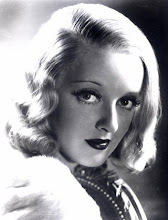World War II brought about a lot of disruptions and restrictions to which Hollywood had to adapt. The end of the war, however, brought about its own set of challenges. With the troops overseas, filmmakers had grown used to targeting a fragmented audience -- the men on the front lines, and the women on the home front. As soldiers returned home, Hollywood led the way in helping America adjust to a reunified peacetime society. Films became more violent to attract the male audiences who were fresh from combat, and female characters exemplified the American woman's return from the workplace back into the home. 1947's Dead Reckoning is a prime illustration of how Hollywood transitioned into the postwar period.
Dead Reckoning is clearly aimed at soldiers returning from war. The main male character, Captain Warren "Rip" Murdock (Humphrey Bogart), is a former soldier. Fitting with noir conventions, he refuses aid from his superiors in Washington, acting more as a lone detective as he tries to clear the name of his fellow soldier, Johnny, who had enlisted under an alias after having been accused of murdering the husband of his lover, Coral "Dusty" Chandler (played by Lauren Bacall look-alike Lizabeth Scott). In keeping with censorship rules regarding the portrayal of the military, it is immediately revealed that Johnny is innocent -- we can't have the audience doubting the virtue of a man in uniform, after all. The film then unfolds as a whodunnit as Rip tries to determine who framed Johnny.
There are several elements throughout the film that point to a marked change in censorship compared to earlier noirs. For example, Martinelli, the owner of the club where Dusty works, is portrayed as a gangster. This marks the return of a genre and character that had been banned during the war as "unAmerican." Here, the mobsters are German, with Nazi weapons; American audiences at this time were seeing newsreels of the liberated concentration camps, leaving a lasting and powerful impression of the atrocities committed by the defeated enemy. In particular, Martinelli's right-hand man Krause is portrayed as positively sadistic, doling out brutal beatings set to music. The excessive violence was a means of reaching audiences who had been desensitized, either by combat or by footage of its aftermath.
One of the most radical differences between wartime and postwar films noir is the portrayal of gender roles. Earlier films featured independent working females holding down the fort while the men were away. At the end of the war, Hollywood needed to convince women to give up their independence so that men could regain their jobs in the face of massive unemployment. From a modern perspective, this film is not at all subtle in its pursuit of that goal. Rip and Dusty have a recurring conversation about a woman's place -- which, according to Rip, is in a man's pocket until he's ready to pull her out again, and then only to look pretty. After resisting, double-crossing, and even trying to kill Rip, Dusty dies wishing that he could pick her up and put her in his pocket. Taken in its historical context, this could be seen as a warning to the women in the audience who balked at surrendering their independence: repent or die.
Subscribe to:
Post Comments (Atom)


No comments:
Post a Comment